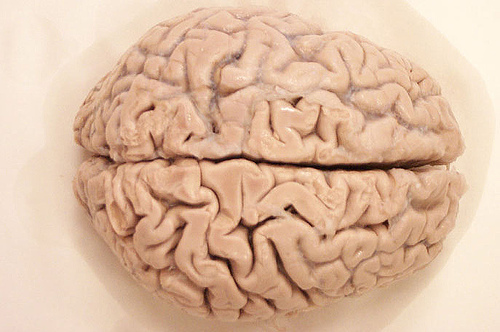
How Head Injuries Affect The Human Brain
It's hard to believe there was one a time that American football players didn't wear helmets--and Australian football players still don't. The most common sports injuries that result in brain injuries in the USA, however, occur on bicycles. And tens of thousands of Americans who served in the military in Iraq and Afghanistan have come home with traumatic injuries to the brain, causing a variety of subtle and not-so-subtle permanent and sometimes progressive disabilities. A blow to the brain can destroy the ability to use a limb, or it can trigger an eating disorder or a problem with mood swings. It can wipe out some memories, enhance others, and change one's life forever, usually not for the better.
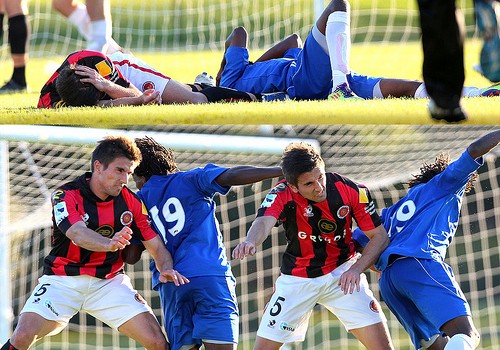
What Causes Concussions?
A concussion is a mild traumatic brain injury, most frequently occurring in players of contact and collision sports, soccer and roller derby, for example. Concussions usually result in altered mental status, although they may or may not result in loss of consciousness. Concussions also occur in auto accidents, and they are not unusual among the elderly who slip and fall. Taking anticoagulant therapies, which many older people do after heart attacks and other vascular ailments, can aggravate the severity of concussion symptoms. Many concussions used to go undetected. Modern diagnostic methods have found that the injury was drastically undertreated and underreported in the twentieth century.
- Important notification about information and brand names used in this slideshow!
- Photo courtesy of Chris by Flickr : www.flickr.com/photos/manlyfootball/7175843340/
- Kelly JP, Nichols JS, Filley CM, et al. Concussion in sports. Guidelines for the prevention of catastrophic outcome. JAMA. Nov 27 1991. 266(20):2867-9.
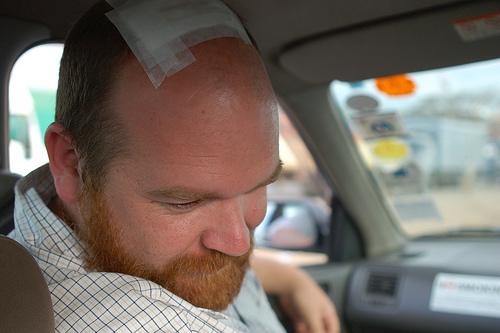
Intensity Of Brain Injuries
Doctors have at least 40 different scales for diagnosing the severity of a traumatic brain injury. The current standards are "simple" and "complex," simple injuries resolving in a week to 10 days, and complex injuries taking longer. Traditionally, however, neurologists have diagnosed concussions in one of three categories. The mildest concussions, not necessariliy requiring less follow-up, resulted in symptoms that lasted just 15 to 30 minutes, with no loss of consciousness. "Grade II" concussions resulted in symptoms that lasted more than 15 to 30 minutes, but showed no lingering symptoms after 24 hours. "Grade III" concussions resulted in loss of consciouness for more than 5 minutes or amnesia for more than 24 hours.
- Important notification about information and brand names used in this slideshow!
- Photo courtesy of Erik (HASH) Hersman by Flickr : www.flickr.com/photos/whiteafrican/3092177782/
- Brooks D, Hunt B (2006). "Current concepts in concussion diagnosis and management in sports: A clinical review". BC Medical Journal 48 (9): 453–459.

Consequences Of Concussions
Neurologists have come to believe that the effects of consequences are cumulative, that a second concussion can complicate the effects of an earlier traumatic brain injury even if it occurs months or years later. In particular, scientists have noted that the effects of concussions are cumulative in children, that injuries in middle school, for instance, increase the risk of serious consequences of injuries in young adulthood. Long-term consequences of concussions can include Parkinson's disease and dementia, but they are more likely to be personality changes and loss of long-term memory. The cumulative consequences of concussions may not be physically visible, but they are likely to be very visible in changes in behavior.
- Important notification about information and brand names used in this slideshow!
- Photo courtesy of jill, jellidonut... whatever by Flickr : www.flickr.com/photos/mulmatsherm/3210578263/
- Breedlove EL, Robinson M, Talavage TM, Morigaki KE, Yoruk U, O'Keefe K, King J, Leverenz LJ, Gilger JW, Nauman EA. Biomechanical correlates of symptomatic and asymptomatic neurophysiological impairment in high school football. J Biomech. 2012 Apr 30. 45(7):1265-72. doi: 10.1016/j.jbiomech.2012.01.034. Epub 2012 Feb 28
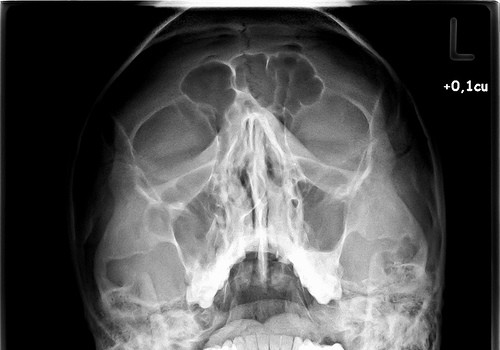
Skull Fractures
A skull fracture is a break in any of the eight cranial bones that enclose and protect the brain. Skull fractures usually but don't always result in injury to the brain. Skull fractures are not always easy to see. There may be bruising on the face, bleeding from the eyes, nose, or mouth, or swelling and tenderness around the impact area. Treatment of skull fractures is not always complicated, but always requires medical attention. Treat any suspicion of skull fracture as a medical emergency. Any time a bone breaks through the skin, of course, immediate medical treatment is essential to save life.
- Important notification about information and brand names used in this slideshow!
- Photo courtesy of Joachim Schlosser by Flickr : www.flickr.com/photos/schlosi/6378581293/
- Columbia University Neurosurgery. Skull Fractures. http://www.columbianeurosurgery.org/conditions/skull-fractures/. Accessed 8 October 2013.

Diagnosing Head/Brain Injury
Mild traumatic brain injuries, such as sports concussions, may present mild symptoms that are hard to pin down as caused by trauma to the brain. Mild traumatic brain injuries in children are even harder to diagnose. In infants and toddlers, doctors have diagnostic criteria for suspicion of brain injury based on whether the child makes noise, whether the child can open his or her eyes in response to talking, and whether the child responds to pain. In older children, teens, and adults, doctors ask about headaches, fatigue, weakness, memory loss, sleep problems, depression, and dizziness. No single symptom is a sure sign of mild traumatic brain injury, but taken together they can point the need for further tests.
- Important notification about information and brand names used in this slideshow!
- Photo courtesy of Julia Christophers by Flickr : www.flickr.com/photos/world_domination/2103329639/
- McDonald CM, Jaffe KM, Fay GC, et al. Comparison of indices of traumatic brain injury severity as predictors of neurobehavioral outcome in children. Arch Phys Med Rehabil. Mar 1994. 75(3):328-37.

Consequences Of Untreated Brain Injury
One of the most common consequences of untreated or unsuccessfully treated mild traumatic brain injury is unemployment. There is often a combination of symptoms that are not especially devastating by themselves, but which cause the injured person to be sufficiently "off their game" that they can't hold down a job. There is usually a period of 1 or 2 years in which there are deteriorating job prospects before clear disability results. People who have multiple mild traumatic brain injuries often experience personality changes. Nice guys can become mean. People who never drink can become alcoholics. Depression follows as marriages, families, and careers fall apart.
- Important notification about information and brand names used in this slideshow!
- Photo courtesy of Helga Weber by Flickr : www.flickr.com/photos/helga/3899825528/
- Chamelian L, Feinstein A. The effect of major depression on subjective and objective cognitive deficits in mild to moderate traumatic brain injury. J Neuropsychiatry Clin Neurosci. 2006. 18(1):33-8.
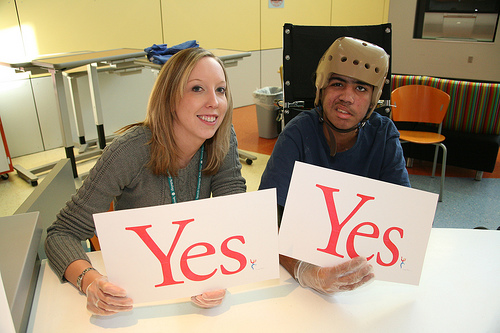
Recovery Process
What can you do to help someone you care about recover from traumatic brain injury? The most commonly overlooked factor in recovery is dignity. People who have brain injuries sometimes do things that they regret later, especially if they are given certain kinds of drugs to compensate for their injuries. A person who gets a drug called Artane for Parkinson's-like symptoms, for example, may suddenly become hypersexual or gamble their life savings away. A person who has short-term memory loss may devastate a child or grandchild by forgetting his or her name. Simply helping someone who has a brain injury avoid embarrassment goes a very long way toward their recovery.
- Important notification about information and brand names used in this slideshow!
- Photo courtesy of Ranken Jordan by Flickr : www.flickr.com/photos/rankenjordan/3402732884/
- Rister R. Healing without Medication. Basic Health Publications, 2003.
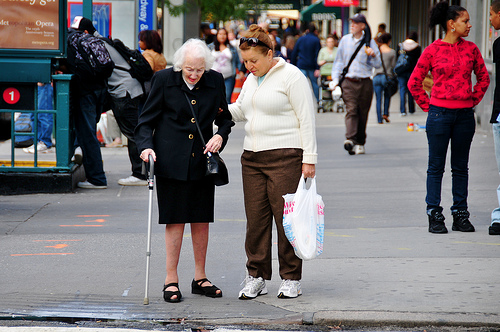
Long-Term Physical Effects Of Brain Injury
Just as there is a variety of long-term social and psychological effects of traumatic brain injury, there also is a variety of long-term physical effects. Traumatic brain injury does not, as many recent news reports suggest, cause amyotrophic lateral sclerosis, also known as Lou Gerig's disease or ALS. This devastating condition is not caused by trauma. However, another devastating condition, Parkinson's disease, can be. Repeated brain injury without support for recovery can result in dementia, the progressive loss of reasoning ability, or short- or long-term memory loss. The kinds of symptoms that emerge depend on the parts of the brain that are injured.
- Important notification about information and brand names used in this slideshow!
- Photo courtesy of Ed Yourdon by Flickr : www.flickr.com/photos/yourdon/2906764434/
- Leitgeb J, Mauritz W, Brazinova A, Janciak I, Majdan M, Wilbacher I, et al. Outcome after severe brain trauma due to acute subdural hematoma. J Neurosurg. Aug 2012.117(2):324-33.
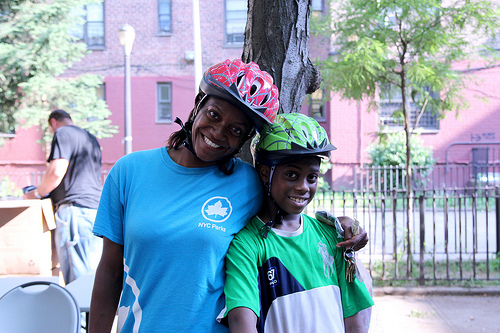
Prevention Of Brain Injuries
Modern helmets go a long way toward preventing mild traumatic injuries, but they don't do any good unless they are worn. Similarly, air bag and seat belts prevent traumatic brain injuries in auto accidents, but seat belts don't work if they aren't buckled. For older adults, there probably is no more important consideration in preventing brain injuries than preventing falls. Floors must not be slick. Stairs have to be well maintained. Bathtubs and showers require safety rails. It's important never to drive when you are under the influence of alcohol or drugs, and especially not to drive under the influence when your passengers include children. Everyone can reduce risk of brain injury by doing exercises and activities that help maintain balance, such as yoga, and everyone benefits from a well-lit and uncluttered home.
- Important notification about information and brand names used in this slideshow!
- Photo courtesy of NYCDOT by Flickr : www.flickr.com/photos/nycstreets/9194071648/
- You may also want to see http://www.cdc.gov/traumaticbraininjury/prevention.html.




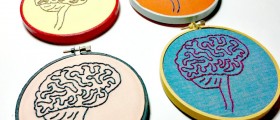

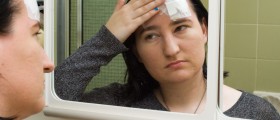
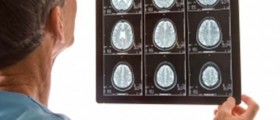
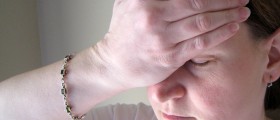

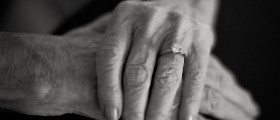

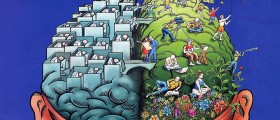



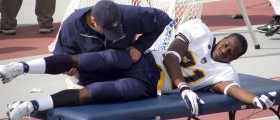









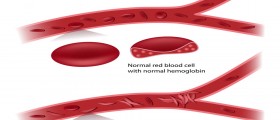
Your thoughts on this
Loading...